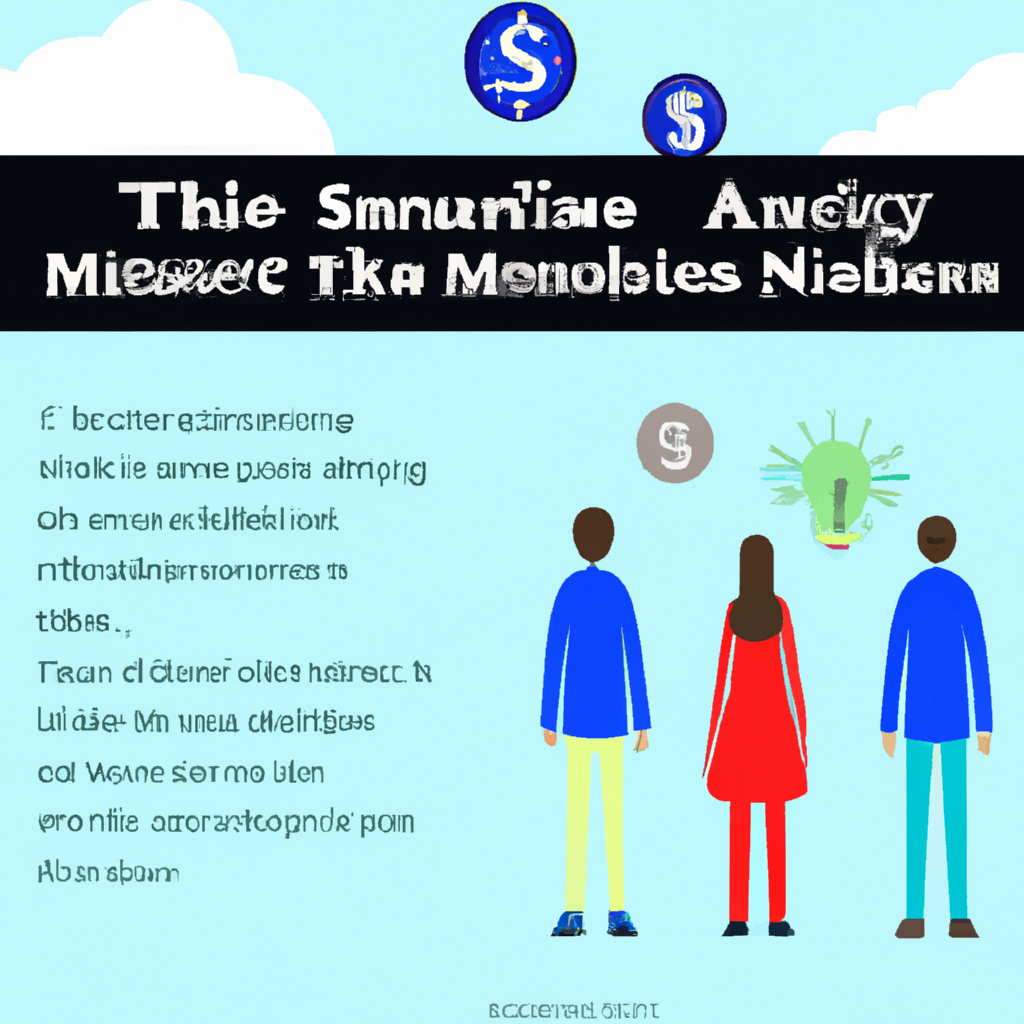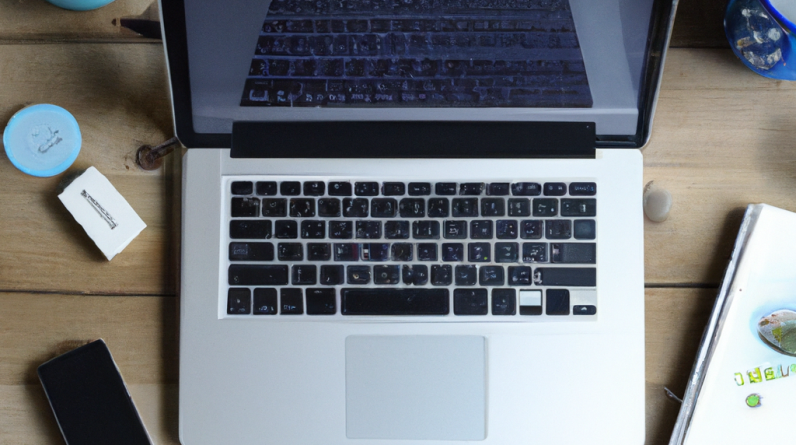
In the video “Simple Ways to Save Money Through Financial Minimalism,” Nicholas Garofola shares his personal experiences and tips on saving money. As a content creator who focuses on minimalism, frugal living, and tech-related topics, Nicholas emphasizes the importance of setting short-term financial goals rather than long-term ones. He suggests practical ways to replace disposable items with reusable alternatives, invest in durable water bottles and filters, and make smart purchases by choosing high-quality items that last. Additionally, Nicholas discusses the benefits of using external hard drives for data storage and cutting his own hair using clippers. He concludes the video by encouraging viewers to find what works best for them and reminding them that these are his personal choices.
Table of Contents
The Concept of Financial Minimalism
Financial minimalism is a mindset and lifestyle that focuses on simplifying one’s finances and reducing unnecessary expenses. It involves being intentional about spending and prioritizing value over material possessions. By adopting financial minimalism, you can experience various benefits and improve your financial well-being.
Definition
Financial minimalism is the practice of living with less and making deliberate choices about how you spend and save money. It involves prioritizing experiences and meaningful connections over material possessions. Financial minimalism encourages individuals to simplify their financial lives, reduce unnecessary expenses, and focus on what truly adds value and brings joy.
Benefits
Adopting financial minimalism can have several positive impacts on your life. Here are some of the benefits you can expect:
-
Financial Freedom: By embracing minimalism, you can reduce your financial burden, improve your financial situation, and ultimately gain more freedom to pursue your goals and dreams.
-
Reduced Stress: Financial minimalism helps eliminate financial clutter and simplifies your financial obligations, which can reduce stress and anxiety related to money.
-
Improved Savings: By cutting back on unnecessary expenses and being intentional with your spending, you can free up extra money to save and invest for the future.
-
Enhanced Quality of Life: Financial minimalism allows you to focus on what truly brings you joy and fulfillment. By prioritizing experiences over possessions, you can lead a more meaningful and satisfying life.

How it relates to saving money
Financial minimalism is closely linked to saving money. By adopting a minimalist approach to your finances, you can identify areas where you can reduce expenses, eliminate unnecessary purchases, and save more effectively. Here are some ways in which financial minimalism can help you save money:
-
Setting Short-Term Financial Goals: Instead of focusing solely on long-term financial goals, financial minimalism encourages setting short-term goals. These goals are more attainable and help you stay motivated and committed to saving money.
-
Replacing Disposable Items: Financial minimalism promotes replacing disposable items with reusable alternatives. This not only reduces waste but also saves money in the long run by eliminating the need to constantly buy disposable items.
-
Investing in Durable and Long-Lasting Items: By investing in high-quality, durable items, you can avoid frequent replacements and save money in the long term. This applies to various products, from household items to clothing and accessories.
-
Optimizing Data Storage: Financial minimalism encourages using external hard drives instead of recurring cloud storage subscriptions. This can help you avoid monthly fees and have more control over your data storage costs.
-
Cutting Expenses on Haircuts: Financial minimalism promotes cutting your own hair using clippers instead of expensive salon visits. This can lead to significant cost savings over time.
-
Unlocking the Power of Library Cards: By utilizing library services, you can access free books, movies, and internet services. This can save you money on entertainment and educational resources.
Overall, financial minimalism is a mindful approach to managing your finances that can lead to substantial savings and a healthier financial outlook.
Setting Short-Term Financial Goals
Short-term financial goals are essential for effective money management. They provide a clear focus and help you stay on track with your financial objectives. Here’s why short-term goals are effective:
-
Motivation and Momentum: Setting short-term goals allows you to experience progress more frequently, keeping motivation and momentum high. Achieving these smaller goals gives you a sense of accomplishment and encourages continued efforts towards your long-term goals.
-
Immediate Feedback: With short-term goals, you receive immediate feedback on your progress and can quickly assess if you’re on track or need to make adjustments. This feedback loop enables you to course-correct and make necessary changes to your financial habits.
-
Better Adaptation to Changing Circumstances: Short-term goals allow you to adapt more quickly to changing circumstances or unexpected expenses. Unlike long-term goals, which may take months or even years to accomplish, short-term goals offer flexibility and adaptability.
Examples of short-term goals:
- Save $500 by the end of the month for an emergency fund.
- Pay off one credit card balance in three months.
- Save $200 per month for a vacation fund.
- Reduce grocery expenses by 20% in the next two weeks.
- Contribute an extra $100 to retirement savings each month.
To track and achieve short-term goals effectively, follow these steps:
-
Define Clear and Specific Goals: Write down your short-term financial goals and make them specific and measurable. This clarity will help you stay focused and monitor your progress accurately.
-
Create a Budget: Establish a monthly budget that aligns with your goals. Track your income and expenses to ensure you have a clear understanding of where your money is going and where you can make adjustments to meet your goals.
-
Automate Savings: Set up automatic transfers to your savings account to ensure consistent progress towards your short-term goals. This disciplined approach removes the temptation to spend the money earmarked for savings.
-
Monitor Progress Regularly: Keep a close eye on your progress by reviewing your budget and tracking your expenses regularly. This allows you to identify any areas where you may be overspending and make necessary adjustments.
-
Celebrate Milestones: When you achieve a short-term goal, celebrate your success! Rewarding yourself for milestones reached can provide additional motivation and reinforce positive financial habits.
By adopting a short-term goal-oriented approach, you can make significant strides in improving your financial situation and achieving long-term financial security.

Replacing Disposable Items
Replacing disposable items with reusable alternatives is not only environmentally friendly but also a smart financial move. Here are the benefits of using reusable alternatives:
-
Cost Savings: Reusable items are a one-time investment that can save you money in the long run. By eliminating the need to constantly buy disposable items, you can reduce your expenses and save more.
-
Environmental Impact: Reusable alternatives help reduce waste and minimize your carbon footprint. By opting for sustainable options, you contribute to a healthier planet and ecosystem.
Examples of disposable items to replace:
-
Paper Towels: Replace paper towels with reusable cloth towels or microfiber cloths. These can be washed and reused, saving you money on buying paper towels regularly.
-
Napkins: Use fabric napkins instead of disposable ones. Fabric napkins are more durable and can be washed and reused, reducing waste and expenses.
-
Plastic Water Bottles: Invest in a durable water bottle and avoid purchasing single-use plastic water bottles. This not only saves money but also reduces plastic waste.
-
Food Storage Bags: Choose reusable silicone or fabric food storage bags instead of single-use plastic bags. These reusable options are more durable and eco-friendly.
Where to find reusable alternatives:
-
Department Stores: Many department stores carry a variety of reusable alternatives, such as cloth towels, fabric napkins, and silicone food storage bags.
-
Online Retailers: Online platforms like Amazon offer a wide range of reusable alternatives. Read reviews and check ratings to ensure you’re purchasing high-quality products.
-
Specialty Stores: Visit specialty stores that focus on eco-friendly and sustainable products. These stores often carry a variety of reusable items, from water bottles to food containers.
By replacing disposable items with reusable alternatives, you can not only save money but also contribute to a more sustainable and eco-friendly lifestyle.
Investing in Durable and Long-Lasting Items
Investing in high-quality, durable items is a key aspect of financial minimalism. By prioritizing quality over quantity, you can save money in the long run and reduce waste. Here are the advantages of investing in durable products:
-
Longevity: High-quality items are designed to withstand the test of time. They are made with durable materials and excellent craftsmanship, ensuring they last longer compared to cheaper, lower-quality alternatives.
-
Cost-Effectiveness: While durable items may initially have a higher price tag, they often offer better value for money in the long term. By investing in a durable product, you reduce the need for frequent replacements, ultimately saving money over time.
-
Reduced Environmental Impact: By purchasing durable items, you contribute to reducing waste and minimizing your environmental impact. Durable products require fewer resources and generate less waste compared to items with a shorter lifespan.
How to identify durable products:
-
Research Brands: Before making a purchase, research different brands and read reviews to identify companies that prioritize quality and durability. Look for reputable brands known for their craftsmanship and commitment to producing long-lasting products.
-
Material Quality: Carefully evaluate the materials used in the product. Look for items made from high-quality materials that are known for their durability, such as stainless steel, genuine leather, or solid wood.
-
Warranty or Guarantee: Check if the product comes with a warranty or guarantee. A longer warranty period typically indicates that the manufacturer stands behind the quality and durability of their product.
Examples of items worth investing in:
-
Kitchen Appliances: High-quality kitchen appliances, such as blenders, food processors, and stand mixers, can last for years and provide superior performance compared to cheaper alternatives.
-
Furniture: Invest in well-made furniture pieces that will withstand everyday use and stand the test of time. Look for sturdy construction and quality upholstery for sofas, chairs, and tables.
-
Electronics: When purchasing electronics, opt for reputable brands known for their reliability and durability. While they may be more expensive upfront, they are less likely to break or malfunction, saving you money on repairs or replacements.
-
Clothing: Invest in high-quality clothing made from durable fabrics. These garments will last longer, require fewer replacements, and maintain their appearance and functionality over time.
Considering the cost per use:
When evaluating the cost of a durable item, it’s helpful to consider the cost per use rather than just the initial price. The cost per use determines the value you receive from the product over its lifespan. For example, a durable winter coat that costs $200 and lasts for five years would have a cost per use of $40 per year. This approach allows you to assess the value and affordability of a product beyond its upfront cost.
By prioritizing durability and investing in high-quality items, you can save money, reduce waste, and enjoy the benefits of owning long-lasting products.

Optimizing Data Storage
In the digital age, data storage has become increasingly important. Financial minimalism extends to the way you organize and store your digital files, and making smart choices can help you save money in this area. Here’s why you should consider optimizing your data storage:
-
Drawbacks of Recurring Cloud Storage Subscriptions: Many individuals rely on cloud storage services that charge monthly or annual fees. While these services offer convenience and accessibility, the costs can add up over time, especially if you require a large amount of storage.
-
Benefits of Using External Hard Drives: Using external hard drives can be a cost-effective alternative to recurring cloud storage subscriptions. You make a one-time investment in the hardware and have full control over your data storage without the need for monthly fees.
-
How to Organize and Back Up Data: To optimize your data storage, organize your files in a systematic manner that allows for easy access and retrieval. It’s also crucial to back up your data regularly to protect against data loss. This can be done manually or through automated backup software.
-
Recommendations for Reliable External Hard Drives: When choosing an external hard drive, look for reputable brands known for their reliability. Consider the storage capacity you require and read customer reviews to ensure you’re making a wise investment.
By choosing external hard drives for data storage and effectively organizing and backing up your files, you can save money on recurring cloud storage fees and have peace of mind knowing your data is secure.
Cutting Expenses on Haircuts
Haircuts can be a significant expense, especially if you visit a salon or barber regularly. Financial minimalism encourages finding creative ways to cut costs, and learning to cut your own hair can lead to substantial savings. Here’s why cutting your own hair can be a cost-effective option:
-
The Cost Savings: Professional haircuts can range anywhere from $20 to $100 or more, depending on the location and the stylist’s expertise. By investing in a pair of clippers and learning to cut your own hair, you can save a significant amount of money over time.
-
Essential Tools for At-Home Haircuts: To achieve a professional-looking haircut at home, you’ll need a few essential tools. These include a good quality pair of clippers with various guard sizes, scissors, a comb, and a handheld mirror for the back of your head.
-
Tips for Achieving a Professional Look: Cutting your own hair may seem daunting at first, but with practice and the right techniques, you can achieve a professional-looking result. Watch tutorial videos, follow step-by-step instructions, and take your time to ensure precision.
-
Maintaining Your Haircut: Regular maintenance is crucial to keeping your at-home haircut looking fresh. Invest in a handheld mirror to check the back of your head and touch up any uneven areas or overgrown sections.
While cutting your own hair requires practice and patience, the long-term cost savings make it a worthwhile skill to learn. Start by practicing on simpler haircuts and gradually work your way up to more complex styles.
Unlocking the Power of Library Cards
Library cards are a valuable resource that many people overlook. Utilizing your local library can provide access to a wide range of resources and save you money on entertainment and educational materials. Here’s how you can make the most of your library card:
-
The Range of Resources Available at Libraries: Libraries offer much more than just books. Most libraries have extensive collections of audiobooks, e-books, movies, music, and magazines. Some even provide access to online learning platforms and digital subscriptions.
-
Accessing Free Books, Movies, and Internet Services: Instead of purchasing books or renting movies, borrow them for free from your library. Many libraries also offer free internet access, providing a cost-effective solution if you don’t have reliable internet service at home.
-
How to Sign Up for a Library Card: Visit your local library’s website or go in person to sign up for a library card. The process is usually straightforward, and you’ll need to provide identification and proof of address.
-
Making the Most of Library Services: Take advantage of all the services your library offers. Attend events and workshops, participate in book clubs, and explore the various resources available to you. Libraries are often community hubs, providing opportunities for social connection and engagement.
By utilizing your library card, you can access a wealth of resources without incurring additional costs. Libraries are a treasure trove of knowledge and entertainment, making them a valuable asset for financial minimalists.
Nicholas Garofola’s Personal Choices
Nicholas Garofola, a content creator known for his focus on minimalism and frugal living, shares his personal strategies for financial minimalism. While his choices may not work for everyone, they offer unique insights and encouragement to find individualized strategies. Here’s a glimpse into Nicholas Garofola’s approach:
-
His Approach to Financial Minimalism: Nicholas emphasizes the importance of intentional spending and living with less. He focuses on minimizing waste, reducing expenses, and maximizing value. His choices align with his personal values and priorities.
-
Why His Choices May Not Work for Everyone: Financial minimalism is a deeply personal journey, and what works for one person may not work for another. Factors like lifestyle, personal preferences, and financial circumstances can influence the individualized approach to financial minimalism.
-
Encouragement to Find Individualized Strategies: Nicholas encourages viewers and readers to explore their own financial goals and discover what resonates with them. Financial minimalism is not a one-size-fits-all approach, and it’s essential to tailor strategies to suit individual needs and circumstances.
By acknowledging that everyone’s financial journey is unique, Nicholas provides insight and encouragement for individuals to find their own path to financial minimalism and make choices that align with their values and goals.
Conclusion
Financial minimalism offers a refreshing perspective on money management and can have a positive impact on your financial well-being. By adopting a mindful approach to spending, setting short-term goals, replacing disposable items, investing in durable products, optimizing data storage, cutting expenses on haircuts, and utilizing library services, you can save money and improve your quality of life. While Nicholas Garofola’s personal choices may inspire you, it’s important to find strategies and approaches that resonate with you personally. Embrace the benefits of financial minimalism, customize your journey, and embark on a path to financial freedom and fulfillment.







